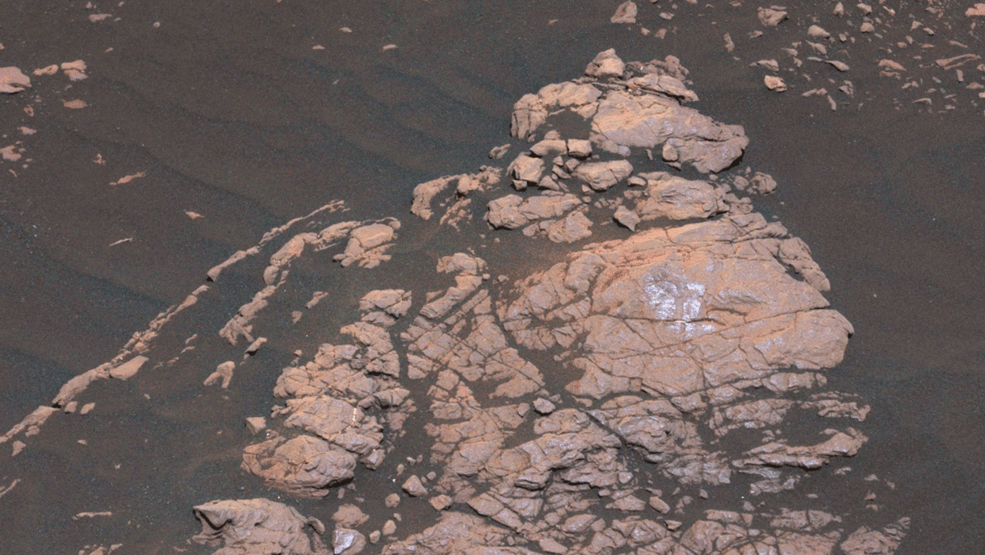Emily Lakdawalla gives an explanation in the Curiosity Update, Sols 2313-2387: Two New Drill Holes Despite Memory Problems on the website of The Planetary Society.
The drilling was incredibly easy going; the rover needed to use no percussion, only drill rotation. It's possible that the easy going resulted from the rock being thinner than the length of the drill bit. When Curiosity pulled the drill out, the drilled rock lifted up. Unsure about the quality of the drilled sample, the Curiosity team decided after CheMin analysis to dump the Aberlady sample and try again nearby, at Kilmarie, to acquire a better sample for SAM.
So what at first sight might have looked like a block of rock, appeared to be a thin, flat layer of solid material, and when the drill was pulled out, it pulled up that light, flat layer by friction.
